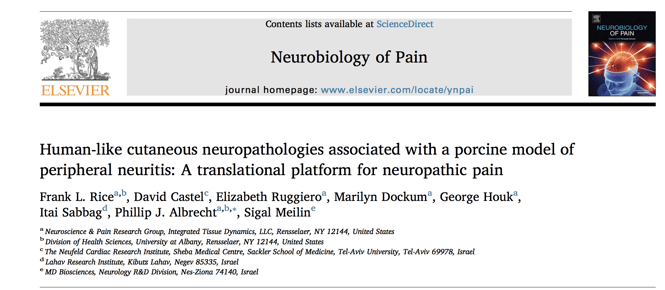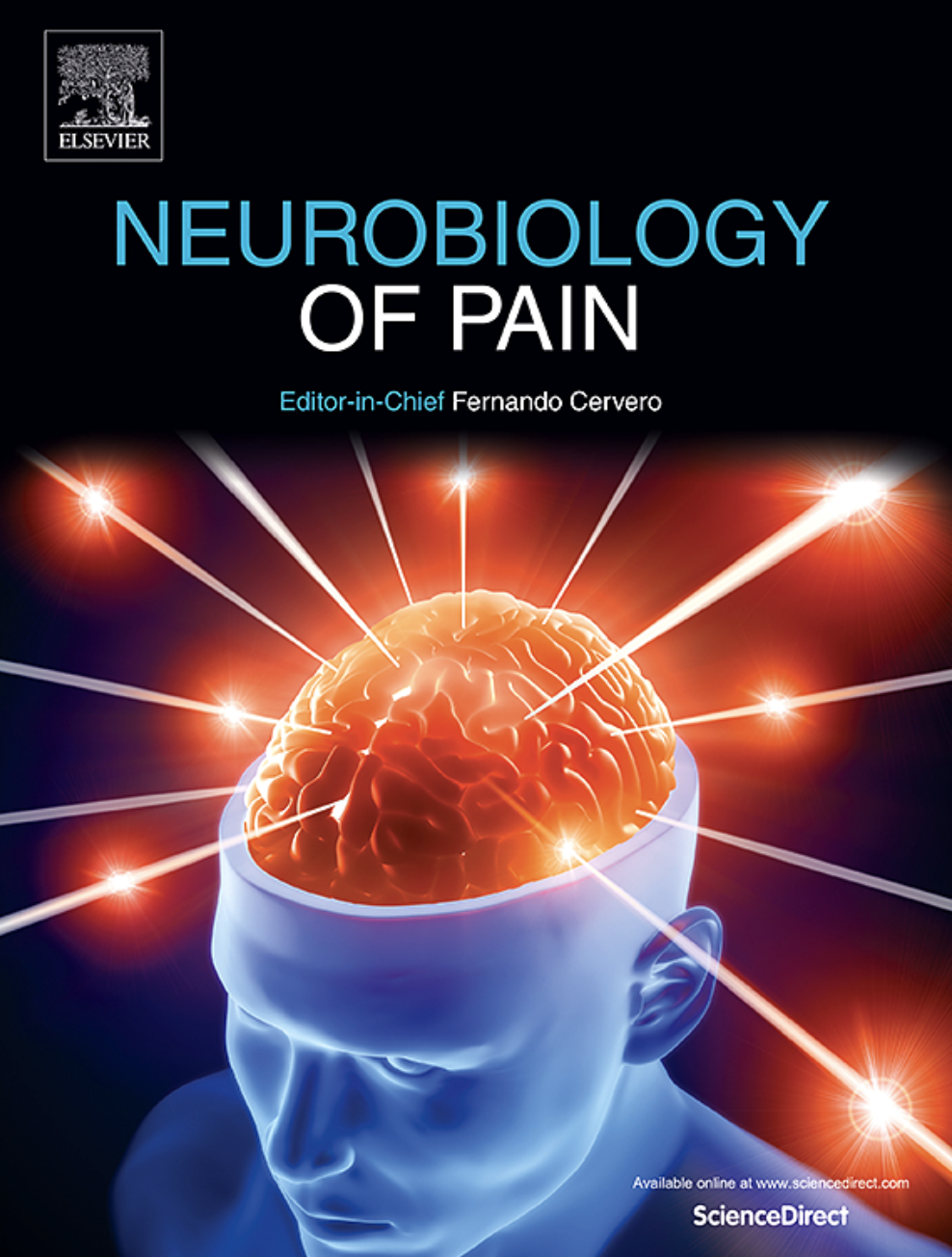MDB Scientists recently published a paper titled “Human-like cutaneous neuropathologies associated with a porcine model of peripheral neuritis: a translational platform for neuropathic pain”, and has been accepted to appear in the Neurobiology of Pain Journal effective July of 2018.

Human chronic neuropathic pain (NP) continues to increase among the population despite massive investments in research and unsuccessful development of approved treatments. Thus, MD Biosciences scientists saw a major unmet public need for predictable, effective and safe therapeutics for NP. To address this challenge, our scientists have developed a peripheral neuritis trauma (PNT) model of chronic pain induced by a proximal sciatic nerve irritation in pigs, utilizing their similar skin structure, metabolism, life span and cutaneous innervation to humans. One major goal of this study was to determine the extent that the PNT model presents with cutaneous neuropathologies with those associated with human chronic NP afflictions. Mimicking human skin biopsies, quantitative multi-molecular immunofluorescence analyses of porcine skin biopsies were performed to determine cutaneous innervation and skin structure. Additionally, ChemoMorphometric Analysis (CMA) results showed "a significant reduction in small caliber intraepidermal nerve fiber (IENF) innervation, altered dermal vascular innervation and aberrant analgesic/algesic neurochemical properties among epidermal keratinocytes, which are implicated in modulating sensory innervation" (Rice et al., 2018). Such pathologic changes are very similar with those indicated from CMA of patients with NP.
Collectively, results provide additional evidence that the porcine PNT model is highly valuable for NP research. Since pig anatomical and physiological features are more similar to humans than rodents, use of this animal model for NP testing and treatment response characteristics will likely provide more realistic results to successful translation to humans. The pig PNT model has many properties demonstrating that is it a promising platform for the discovery, development and safety for efficacy testing of new therapeutic treatments for human NP.
At MD Biosciences, our scientists offer several neuropathic pain models and readout capabilities including but not limited to: innervation quantification, behavior assessments, dermal fiber density, skin biopsy, etc. To learn more about MD Biosciences pain models, our publication or for study-specific inquiries, please contact one of our scientists.




